Daffodils, planting and care in open ground, reproduction features

Planting daffodils in open ground and caring for them does not create any special problems. They tolerate wintering well and germinate with the first warming, because they are primroses.
They are very popular among amateur gardeners due to their abundant flowering and amazing aroma.
Content:
- Description of the plant
- Popular types and varieties of daffodils
- Planting daffodils in autumn and spring
- Growing daffodils in the garden - care rules
- Diseases and pests
- Flowering, what daffodils look like in the photo
- Caring for daffodils after flowering
- Bulb storage
- Propagation of daffodils
- Beneficial features
- How daffodils are used in landscape design
Description of the plant
Daffodils are members of the amaryllis family. They are perennial herbaceous varieties and species.
The bud is placed on a bare peduncle of a slightly compressed or rounded shape. Depending on the species, the flowers can be collected in brushes or single, up to six centimeters in diameter.
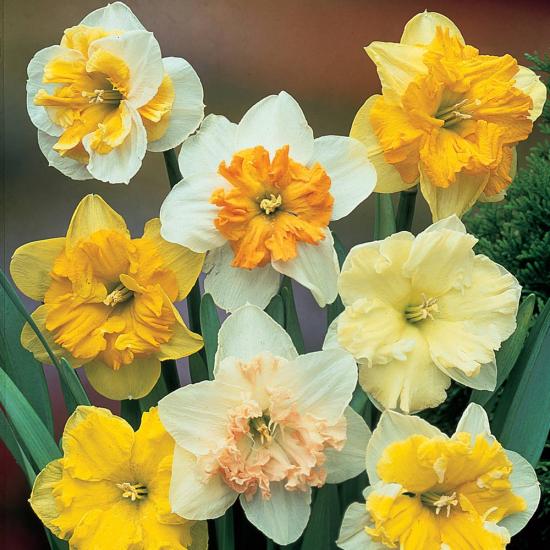
Petals can be double or simple, snow-white or yellow. The perianth is distinguished by an elongated cylindrical tube with a cup-shaped, bell-shaped or tubular crown.
The seeds that are formed in the fruit are numerous. They quickly lose the ability to germinate.
This is one of those plants that can be found in almost every garden plot. Unpretentious and hardy, it does not require special care, grows quickly and blooms profusely.
Popular types and varieties of daffodils
Among cultivated species and varieties, recommended for planting in open ground, we can see indicated in the table.
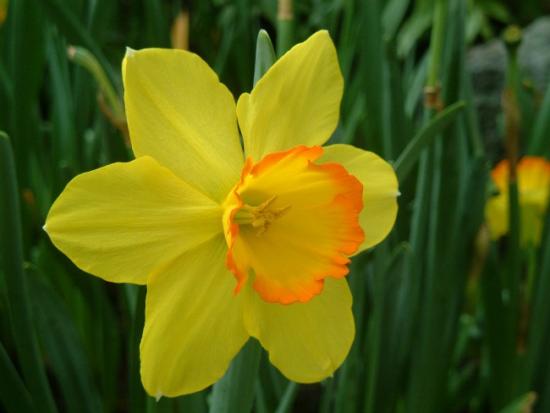
| Kinds | Brief characteristics | The most famous varieties |
| Large-crowned | They are distinguished by the largest size of the inflorescence, which consists of six buds, reaching 12 cm in diameter. The peduncle is single, tubular in shape, up to 0.5 m in height. Flowers - snow-white, orange, yellow | Record, Voa, Anthea |
| Small crown | The diameter of the inflorescences is no more than 8 cm. The color of the crown is yellowish-red, pink, white or scarlet with a greenish dot in the center | Chinese White, Amor, Ice King, Indiana Chief |
| Multifloral | More than eight buds can be collected on a peduncle, white, yellow or apricot in color with an orange crown. They tolerate shade well, but are not frost-resistant species. | Medusa, Elvira, Chefulness |
| Poetic | The inflorescence is solitary with a small crown and a tube, which is colored red along the edge. The peduncle reaches a height of 40-45 cm. The leaves are elongated and narrow, of a grayish tint. | Milan, Sarchedon, Actea |
| Split-crown | Due to the dissection of the crown and the fusion of six free leaves at the base, the impression is created of a second row of petals. The height of the peduncle is 11-12 cm. The color of the inflorescences is white, yellow and pinkish. They are light-loving and do not tolerate dark areas well. | Palmares, Baccarat, Cassata |
| Triandus | Miniature plants with a small crown that is shaped like a glass. The flowers are drooping, collected in inflorescences, or solitary. Crown color - white, gold, yellow, sometimes with a greenish tint | Talia, Tresemble, Hawera |
| Tubular | The length of the crown is almost the same or even longer than that of the petals.Externally, they resemble a gramophone tube, and can reach 7-13 cm in diameter. White and yellow daffodils can be seen on the crowns | Maximus, Celebrity, Birshiba |
| Cyclamenoides | No more than 20 cm in height, similar in appearance to cyclamen. The flower is drooping, with one inflorescence with a long and elongated crown-tube. Blooms early, feels especially good on clay soils | Andalusia, Piping Tom |
Almost all of them are perfect for our climate. However, be sure to pay attention to frost resistance indicators and flowering duration.
Even more information about the types and varieties of daffodils:
Planting daffodils in autumn and spring
You can plant bulbs at different times, but it is important to remember some of the features of each of them.
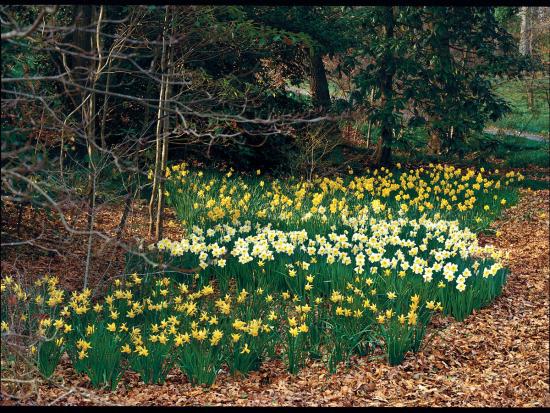
When planting, it is important to consider that:
- Planting in early autumn or late summer are the most preferable options. You can start from the beginning of August until mid-September. During this period, the growth of processes is activated;
- Planting daffodils in spring acceptable if it was not possible to plant in the fall. In order for it to be successful, the bulbs must be kept cool for several weeks. You can use a refrigerator (not a freezer!) for this. The best time for spring planting is mid-April and there is no point in delaying it.
- The optimal planting time is autumn, end of summer. However, do not despair if time has been lost; mid-spring is also quite suitable for planting.
Growing daffodils in the garden: care rules
In order for flowers to grow healthy and delight you with a pleasant aroma and lush bloom, it is important to adhere to a number of rules.
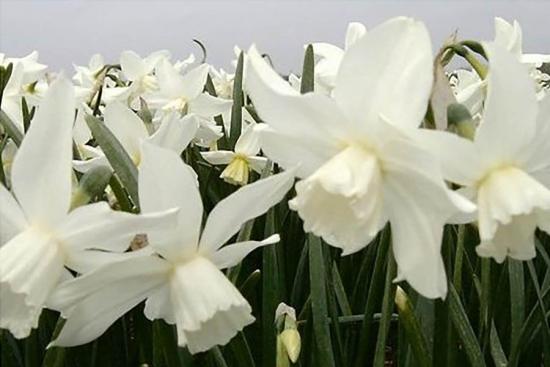
The main ones include:
- Regular watering and fluffing of the substrate; with the onset of summer heat, additional watering will be required;
- Application of annual fertilizers - they require two-time application of liquid fertilizers. The first is complex mineral nutrition during the formation of buds. The second is the application of fertilizer for flowering plants.
We invite you to watch a video about growing daffodils:
Following these simple rules will allow you to admire the abundant flowering and enjoy the pleasant aroma exuded by the flowers.
In addition, strong, healthy plants are more able to resist possible diseases or pest infestations.
Diseases and pests
Although the plants are quite resilient, they can sometimes also suffer from diseases and pests.
| Pest or disease | Symptoms and signs | How to fix |
| Bottom rot, or fusarium | Starts from the bottom and spreads along the bulb | It is recommended to destroy all damaged bulbs and store healthy ones at a temperature not exceeding 18 C |
| Mosaic | Viral disease of leaves and flowers. It appears as green or yellow spots and leaf deformation. Transmitted in bulbs and through parasite bites | There is no treatment, affected plants should be destroyed |
| Hoverflies | The larvae of these flies penetrate the bulb and provoke its rotting. This can be noticed by a sharp stop in plant growth | Regular loosening and mulching is useful as a preventive measure. |
| Nematodes | Microscopic pests, damage to which manifests itself in the curvature of shoots and yellowing of leaves. To prevent it, before planting, it is recommended to dip the bulbs in water at 43.5 C | “Fitoverm” is suitable for treatment |
In order to prevent the death of affected plants, it is recommended to monitor their condition and, if alarming symptoms appear, treat them with appropriate medications.
If the problem cannot be eliminated in this way, it will be necessary to destroy the diseased plants, this will prevent the spread of the disease to healthy bushes.
Flowering, what daffodils look like in the photo
Depending on the species, daffodils in the photo may look different. The only thing that unites them is grace and beauty. Light tones of flowers turn any photo into a warm illustration of spring.
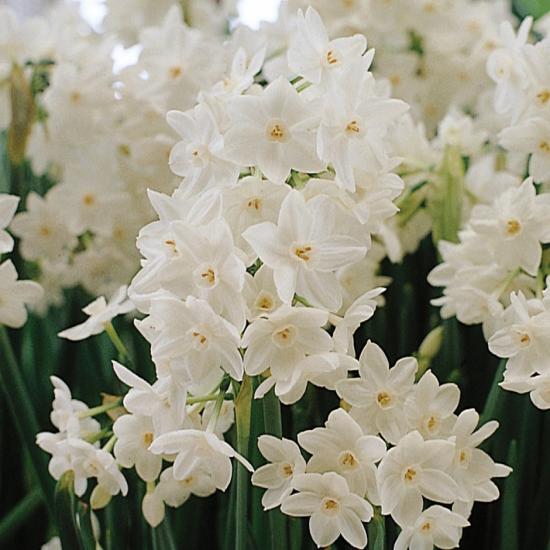
If some flowers in real life turn out to be far from being as good as in the image, then this option is excluded here. Both in life and in the image, they will delight you with the grace of lines and the unforgettable charm of light tones.
Caring for daffodils after flowering
Basic care for daffodils after flowering consists of several stages that should not be forgotten:
- Leaves should not be trimmed for several months;
- After the foliage has dried, it is not pulled out, but carefully trimmed;
- In winter, young flowers are covered with leafy turf or humus;
- It is recommended to dig up young bulbs once every three years, in mid-summer.
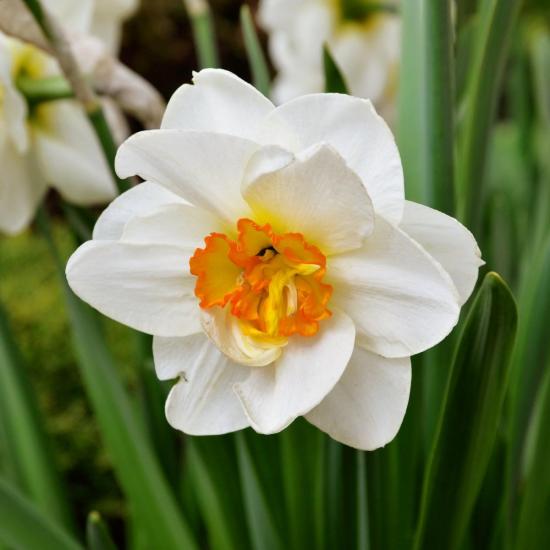
It is important to remember that the bulbs continue to breathe, so you should not keep the planting material out of the soil for more than two months.
Bulb storage
It is recommended to store the bulbs in a dry, well-ventilated place, in a container without soil. For added convenience, different varieties can be placed in different containers and labeled.
For three weeks, the bulbs are dried at a temperature of + 24 C. After this, the seed must be cleaned and divided. At this stage it is important not to damage anything. In addition, each bulb must be carefully checked for diseases or pests.
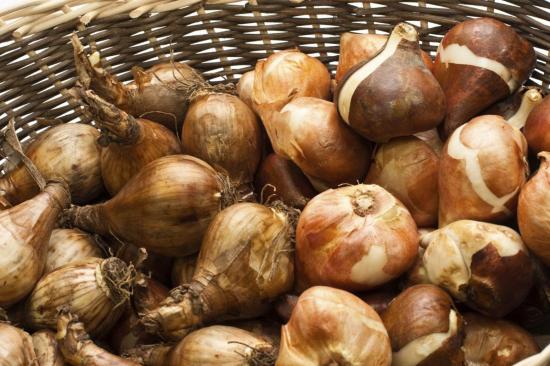
Children who fall away must be separated for subsequent placement.After this, the bulbs need to be put back into containers. The room temperature during subsequent storage should not exceed 10-17 C, and the humidity level should not exceed 75%.
Propagation of daffodils
Reproduction occurs in two ways: by seeds or by planting. The latter method is often used, separating the young bulbs from the mother. The vegetative method is suitable for plants older than three years. So, during this period, the upper scales have time to dry and it can be divided into several parts for subsequent planting.
Planting with seeds is not particularly common, but is done. To do this, it is recommended to sow ripened seeds that have not been dried. Flowering of such seedlings can be seen only in the fifth year.
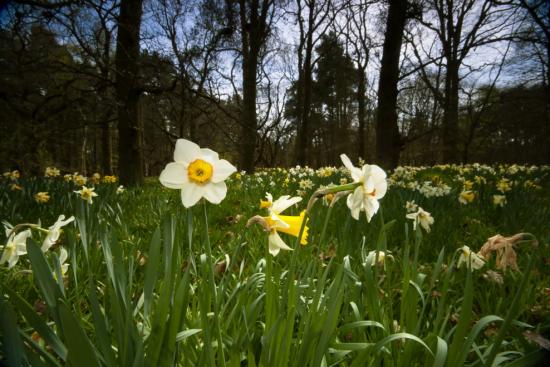
Depending on the experience of the gardener, you can choose any of the options. However, the second one still requires more skill.
Beneficial features
In addition to beauty, these flowers are known for their beneficial medicinal properties. Thus, the alkaloids that are part of the flower are used to treat certain types of leukemia, radiculitis, polyneuritis, and muscle atrophy.
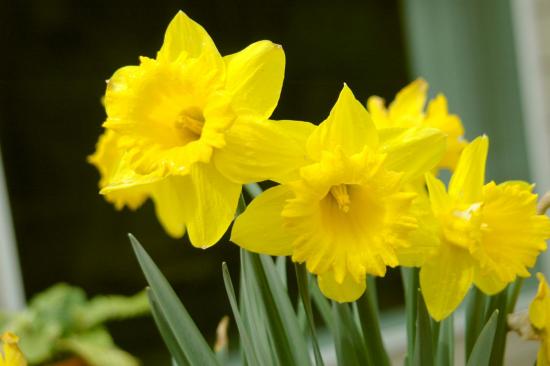
In alternative medicine they are used to treat male infertility. In addition, they are used in the manufacture of painkillers and for the prevention of mastitis in women.
The oil is used for relaxation and treatment of nervous diseases. But it is contraindicated in case of personal intolerance, and is not recommended for use by pregnant women and children.
Narcissus is not only an elegant garden decoration, but also a medicinal plant. It has been known and used since time immemorial in China and ancient Greece.
How daffodils are used in landscape design
Since the leaves of these flowers do not wither for a very long time, they are often paired with plants with lush foliage, which will help cover yellowed flowers and leaves. Therefore, you can often find hosta or mantle next to them.

Planting is done in small groups of up to seven pieces, often combined with snowdrops or plants with later development periods - bergenia and primrose.
Used to frame borders, decorate alleys and alpine slides.
A well-chosen variety is an amazing decoration for a garden of any style. Designers willingly use the plant as an important component of many spring flower beds.
Growing daffodils in open ground is not a difficult process. Unpretentious and persistent plants require minimal effort in care, but they pay royally and generously for the attention they receive.

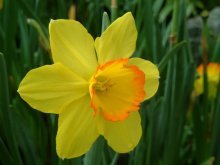
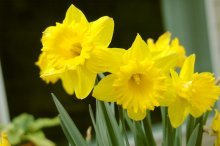
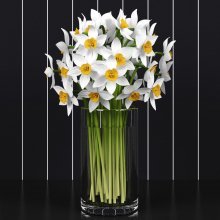
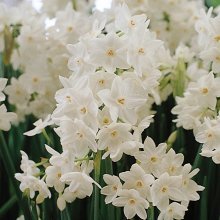
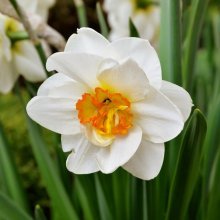
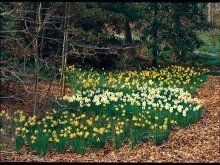
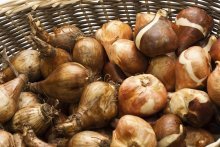
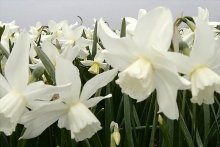
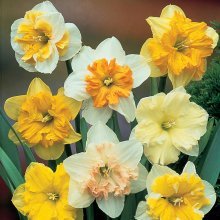
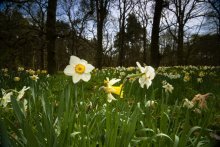
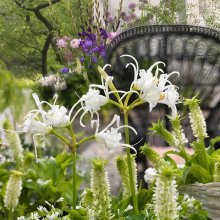
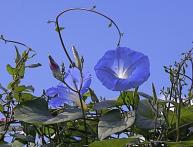
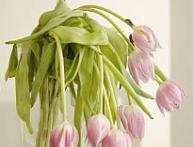
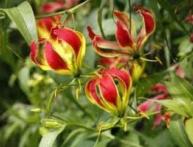
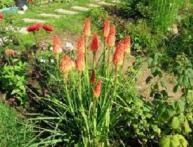

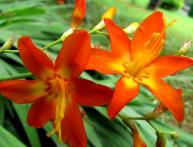
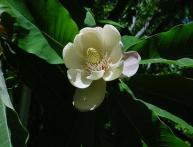
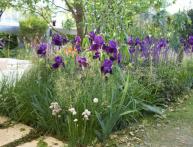
Comments
They fade very quickly, but they look quite magnificent in the garden. It turns out that this plant has a lot of species, I know for sure that we grow yellow and white daffodils.
Daffodils are easy to care for. The only thing they don’t like is stagnant water, as the bulbs will disappear. If the bushes are already too large, you need to dig them up and replant each bulb separately, otherwise there will be no flowering due to the large density.
I really love these early spring primroses, I would like them to bloom actively and wildly every year, but for some reason, in the third year of planting, I had very few flower stalks. In the fall I divided and replanted all the daffodils, maybe this will help?
We've always had daffodils. Only, for some reason, varieties with beautiful large flowers, after a couple of years of lush flowering, begin to degenerate and turn into the most ordinary ones. Why this happens is unclear